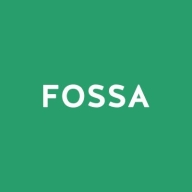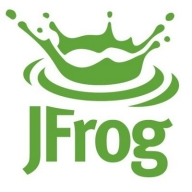

FOSSA and JFrog Xray compete in the software composition analysis space. FOSSA is often preferred for its cost-effectiveness and robust support, while JFrog Xray is notable for its comprehensive feature set, appealing to those prioritizing detailed functionality.
Features: FOSSA offers advantages in license compliance, vulnerability detection, and compatibility with CI/CD pipelines. It enhances visibility and security in managing open-source projects. JFrog Xray excels with in-depth binary analysis, artifact scanning, and seamless integration with JFrog Artifactory, ensuring broad coverage in security and compliance.
Room for Improvement: FOSSA could benefit from expanding its unclassified license handling to offer more comprehensive out-of-the-box legal policies. Additionally, integrating proprietary code analysis could enhance its offering. JFrog Xray's complexity might be lessened with streamlined user interfaces and simpler policy management to improve usability without losing functionality.
Ease of Deployment and Customer Service: FOSSA is known for its straightforward deployment and strong support services, aiding quick integration into diverse environments. While JFrog Xray provides extensive documentation and supportive assistance, its deployment can be more challenging due to its myriad of features.
Pricing and ROI: FOSSA generally presents lower initial costs and faster ROI for companies not needing in-depth analysis. Its competitive pricing is ideal for basic licensing and vulnerability management. Although JFrog Xray is more expensive, its comprehensive capabilities justify the investment for firms requiring detailed artifact analysis and security oversight.
| Product | Market Share (%) |
|---|---|
| JFrog Xray | 10.0% |
| FOSSA | 3.1% |
| Other | 86.9% |


| Company Size | Count |
|---|---|
| Small Business | 5 |
| Midsize Enterprise | 1 |
| Large Enterprise | 8 |
| Company Size | Count |
|---|---|
| Small Business | 1 |
| Midsize Enterprise | 3 |
| Large Enterprise | 6 |
JFrog is on a mission to enable continuous updates through Liquid Software, empowering developers to code high-quality applications that securely flow to end-users with zero downtime. The world’s top brands such as Amazon, Facebook, Google, Netflix, Uber, VMware, and Spotify are among the 4500 companies that already depend on JFrog to manage binaries for their mission-critical applications. JFrog is a privately-held, global company, and is a proud sponsor of the Cloud Native Computing Foundation [CNCF].
If you are a team player and you care and you play to WIN, we have just the job you're looking for.
As we say at JFrog: "Once You Leap Forward You Won't Go Back!"
We monitor all Software Composition Analysis (SCA) reviews to prevent fraudulent reviews and keep review quality high. We do not post reviews by company employees or direct competitors. We validate each review for authenticity via cross-reference with LinkedIn, and personal follow-up with the reviewer when necessary.